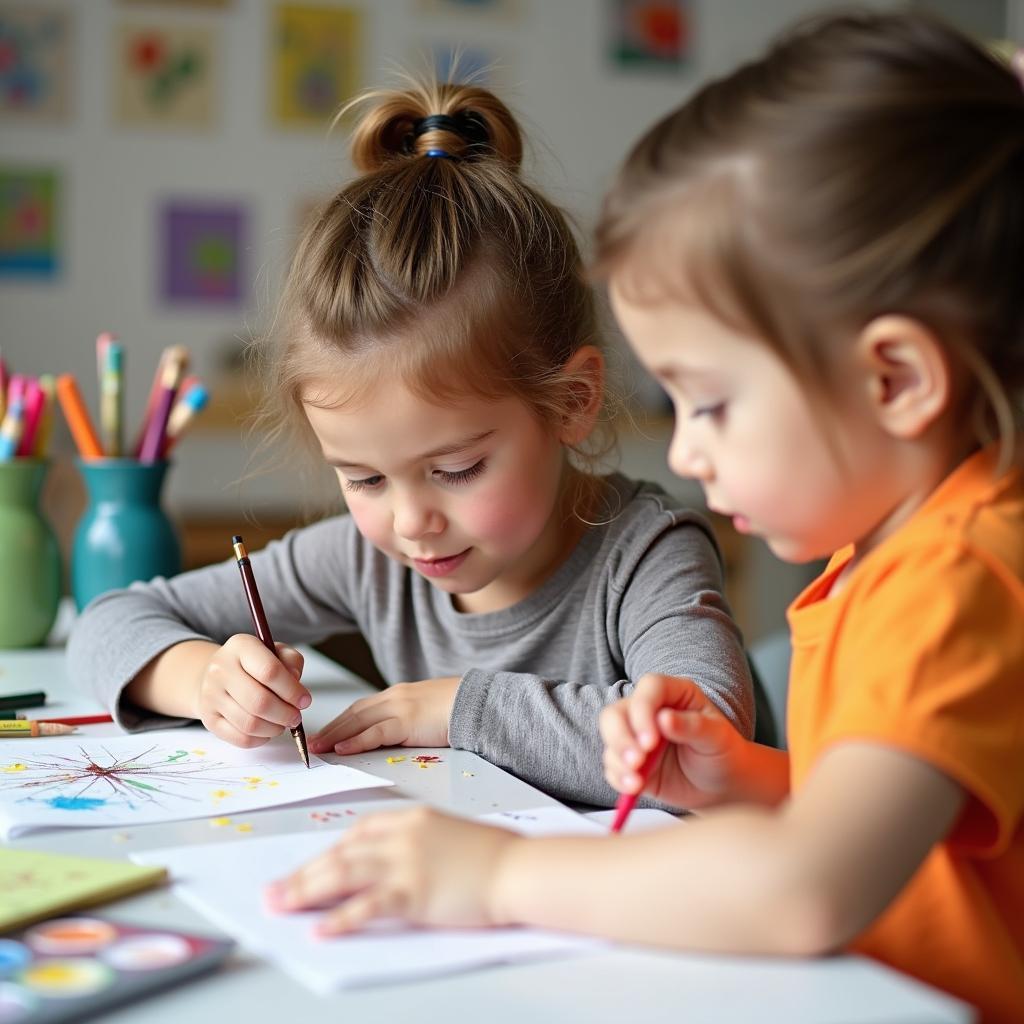Early art education has been a recurring theme in IELTS Writing Task 2, appearing approximately twice per year in recent examinations. Based on analysis from major IELTS preparation websites, this topic intersects with broader themes of childhood development, educational policies, and cultural preservation, making it highly relevant for future tests.
Nội dung bài viết
Similar to The benefits of early music education, this subject requires candidates to demonstrate comprehensive understanding of educational development.
Sample Question Analysis
Some people think that art education (such as painting, drawing, and sculpture) should be a mandatory part of early childhood education. Others believe resources should focus on core subjects like mathematics and science. Discuss both views and give your opinion.
This question requires:
- Discussion of both perspectives
- Clear position statement
- Relevant examples and supporting evidence
- Logical structure and coherent arguments
 Young students engaging in art activities in classroom
Young students engaging in art activities in classroom
Band 9 Sample Essay
Art education in early childhood development has become a contentious issue, with some advocating for its mandatory inclusion while others prefer emphasis on traditional academic subjects. While both perspectives have merit, I firmly believe that art education should be an essential component of early childhood curriculum due to its unique benefits for cognitive and emotional development.
Just as The benefits of early environmental education contribute to holistic development, proponents of mandatory art education argue that artistic activities enhance crucial developmental skills. Children who engage in painting, drawing, and sculpture develop fine motor skills, spatial awareness, and creative problem-solving abilities. Furthermore, art education provides a vital platform for emotional expression and cultural understanding, which are fundamental aspects of early childhood development.
However, those prioritizing core subjects present valid concerns about academic preparation. They contend that in an increasingly competitive global environment, strong foundations in mathematics and science are crucial for future success. Limited educational resources and time constraints often necessitate careful curriculum planning to ensure children receive adequate preparation in these fundamental subjects.
Nevertheless, I argue that art education’s benefits extend beyond aesthetic appreciation. Research consistently demonstrates that children who receive early art education show improved performance across all academic areas, including mathematics and science. The creative thinking and problem-solving skills developed through artistic activities directly enhance learning capabilities in other subjects. Moreover, art education fosters emotional intelligence and cultural awareness, which are increasingly valuable in our interconnected world.
In conclusion, while the emphasis on core subjects is important, integrating art education into early childhood curriculum offers unique and essential benefits that complement rather than compete with traditional academic subjects.
 Students developing cognitive skills through art
Students developing cognitive skills through art
Band 7 Sample Essay
The inclusion of art education in early childhood curriculum has sparked debate between those supporting its mandatory implementation and others advocating focus on core subjects. This essay will examine both perspectives and present my viewpoint on this important educational matter.
Supporters of mandatory art education highlight several benefits. Firstly, art activities help children develop creativity and self-expression. Additionally, through drawing and painting, young learners improve their motor skills and hand-eye coordination. These skills are valuable for overall development and can support learning in other subjects.
On the other hand, advocates for focusing on core subjects present practical arguments. With limited time and resources in schools, they believe mathematics and science should take priority as these subjects provide essential life skills. They argue that strong foundations in these areas are crucial for future academic and career success.
From my perspective, while core subjects are undoubtedly important, art education should not be overlooked. Art classes provide unique opportunities for children to develop creative thinking and problem-solving abilities that benefit their overall academic performance. Furthermore, artistic activities can make learning more engaging and enjoyable for young students.
In conclusion, I believe both art education and core subjects play vital roles in early childhood development. The ideal approach would be to find a balanced curriculum that incorporates both elements effectively.
Key Vocabulary
- contentious (adj.) /kənˈtenʃəs/ – causing or likely to cause disagreement
- mandatory (adj.) /ˈmændətɔːri/ – required by law or rules
- spatial awareness (n.) /ˈspeɪʃəl əˈweənəs/ – understanding of space and position
- aesthetic (adj.) /esˈθetɪk/ – concerned with beauty or art
- holistic (adj.) /həʊˈlɪstɪk/ – characterized by the belief that the parts of something are connected
High-scoring Sentence Patterns
-
Complex Sentence with Concession:
“While both perspectives have merit, I firmly believe that [opinion].” -
Cause-Effect Structure:
“Through [activity], young learners improve their [skill], which leads to [benefit].” -
Parallel Structure:
“Art education provides [benefit 1], enhances [benefit 2], and promotes [benefit 3].”
Consider practicing with this topic by writing your own essay in the comments section below. Focus on incorporating the vocabulary and sentence patterns provided while maintaining a clear structure and balanced argument.


